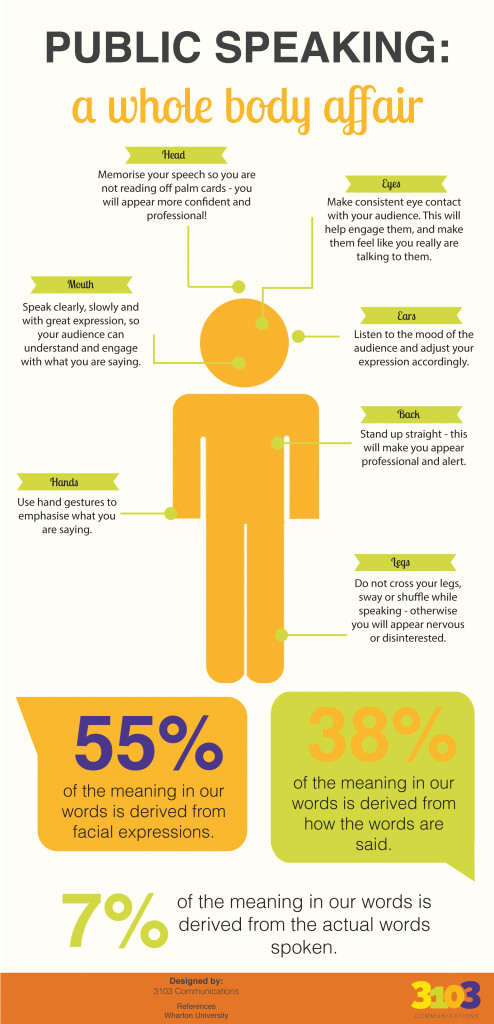How To Be A Successful Public Speaker
Have you ever wondered why TED talks draw millions of views online? Is it because they are more compelling or pertinent to a large audience? Or is it because the speaker is popular or famous? These questions can be answered by research from Science of People, who have collected data and insight into why some talks are more popular than others.
The average person will encounter a handful of staff meetings, conferences, presentations, lectures and/or talks in their lifetime. Some will even have to give some – leading those to ask, what makes a successful public speaker? In any environment, whether in a classroom or professional setting, one must learn how to effectively and successfully speak and present to others. Below are some helpful tips on how to do so.
Public Speaker Takeaway Tips
- It’s not what you say, but how you say it. Everyone has sat through their fair share of lectures or staff conferences about the same dull topic and leaves the
audience tired and yawning. How you present your content is crucial – the success of your discussion is linked to what you physically do rather than what you say. Shocking? Even though we want people to focus on our words, most effective communication is in the form of nonverbal signs and cues. If you stand in the same spot and point at a screen the entire time, your audience doesn’t recognize involvement in the topic, which leads into the next tip.
- The more you move your body, the better. Gestures are a nonverbal way to show and build trust. Studies have found that when we see a person’s hands, we have an easier time trusting them. This is true for the rest of your body. If you move away from the podium or table you are standing at, your audience can see your entire body and therefore can see all of you moving.
- Vocal variety is important. Anyone who has completed a Toastmaster certification will learn the importance of vocal variety in their training. No one wants to listen to a monotone speaker who memorized the entire talk– so raise your voice, tell a story, laugh, shout and do what you need to do to show that you are a human and have more than one level to your voice. It increases how memorable your talk will be and gets your audience engaged in your topic.
- Make first impressions count. Researchers have noted that audience members form opinions about a talk in the first seven seconds. Researcher, Nalini Ambady calls this ‘thin-slicing.’ She says that for efficiency purposes, the brain makes very quick judgments of people within the first few seconds of meeting them. This usually happens before any words are exchanged. This means you must take the time to think about how you enter the room, how you address the audience and how you deliver your first line. My advice? Make a grand entrance.
Whether you are a student, employee, CEO or average Joe, chances are you will have to get up in front of a group of people and speak at some point in your life. Why not make that talk memorable for your audience? If you’re engaged and successful, you may even inspire others.
